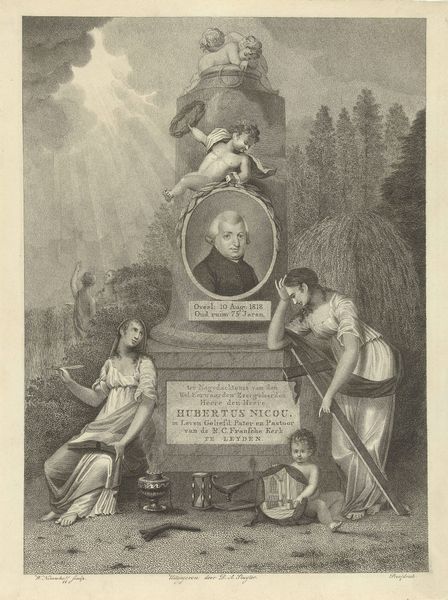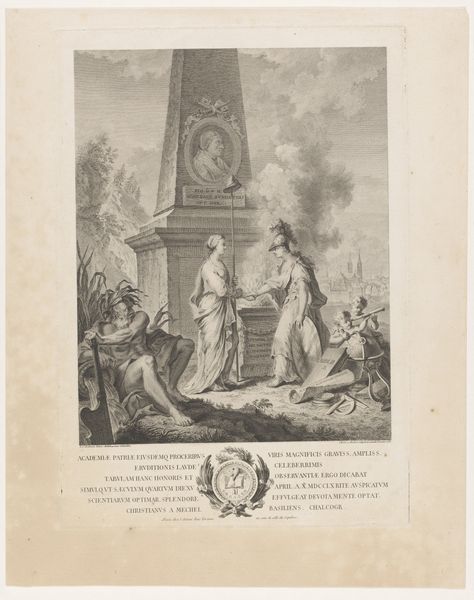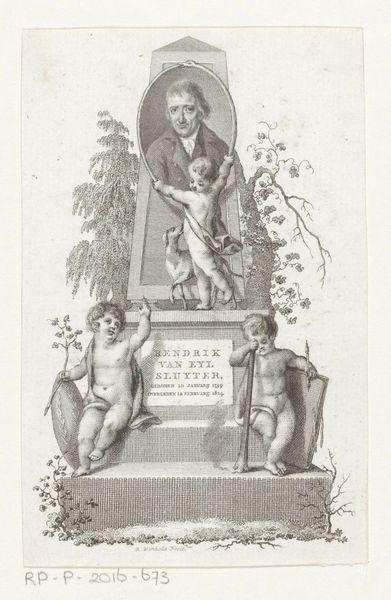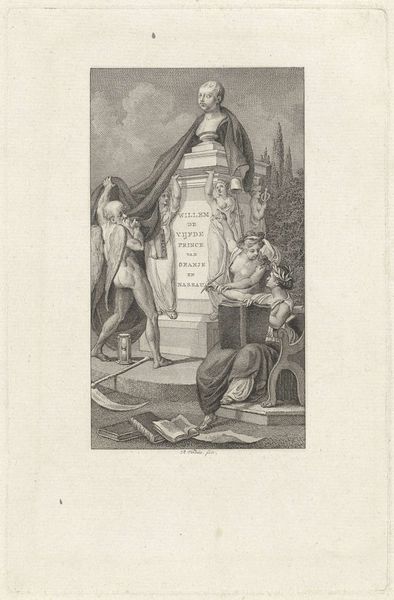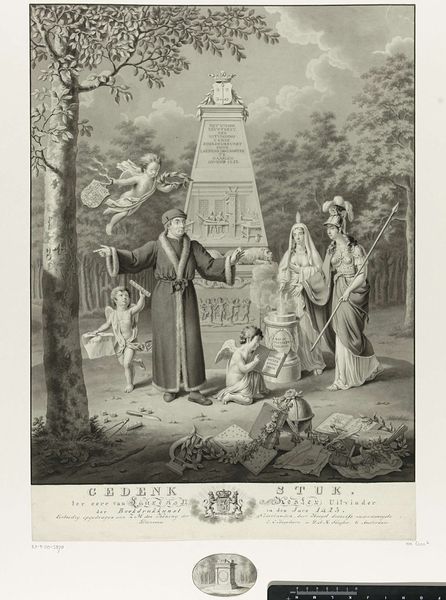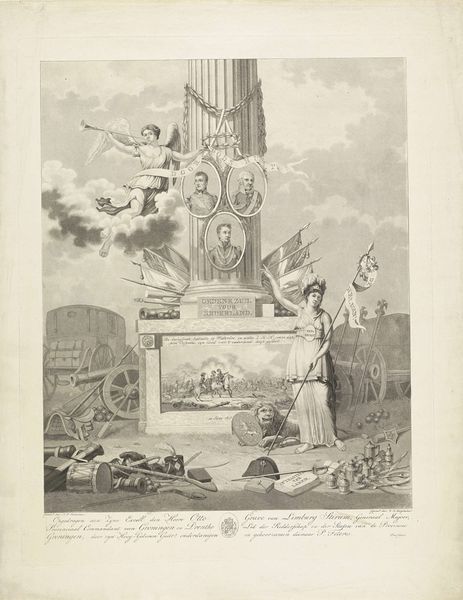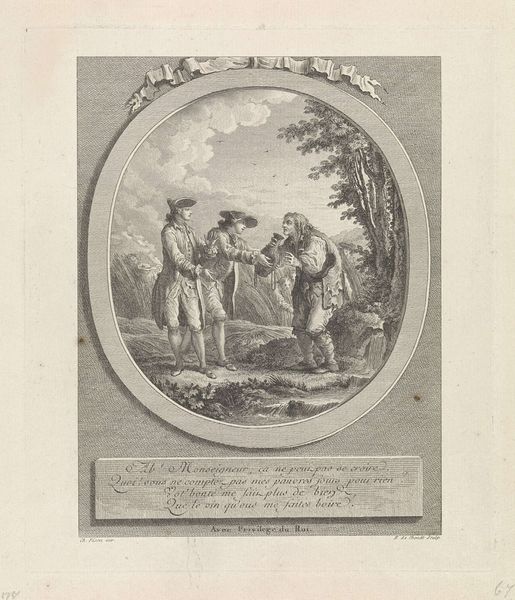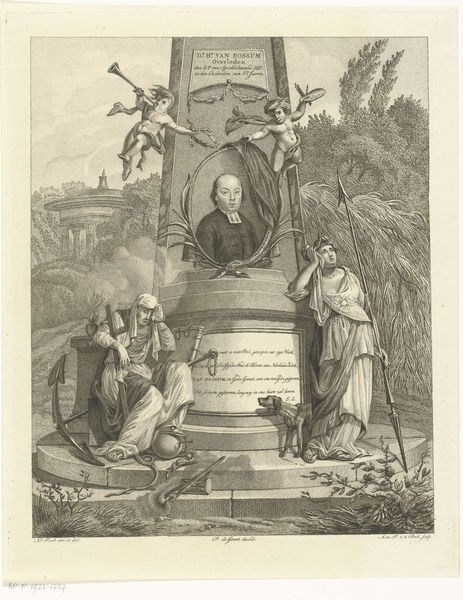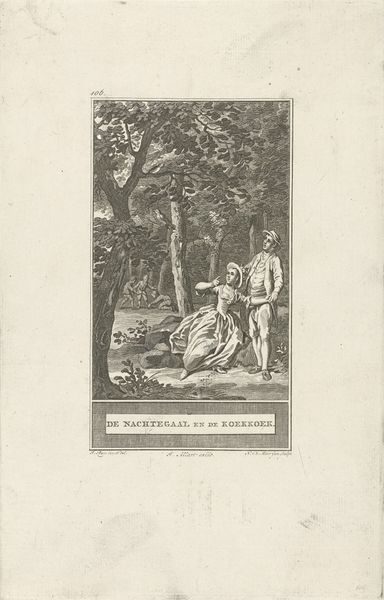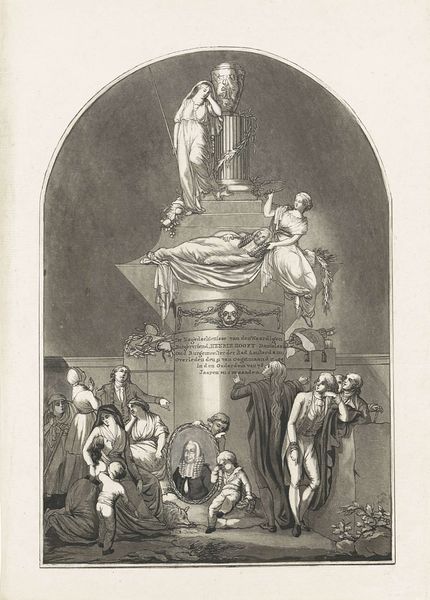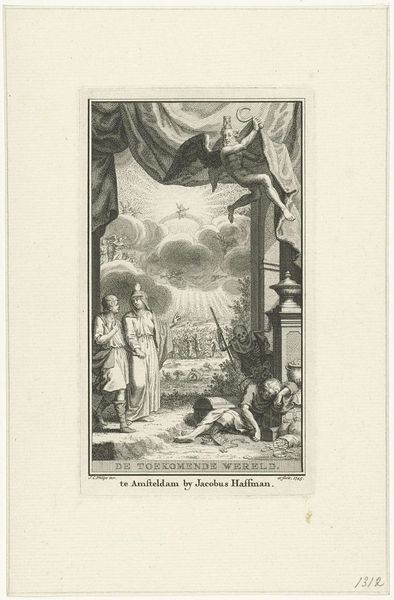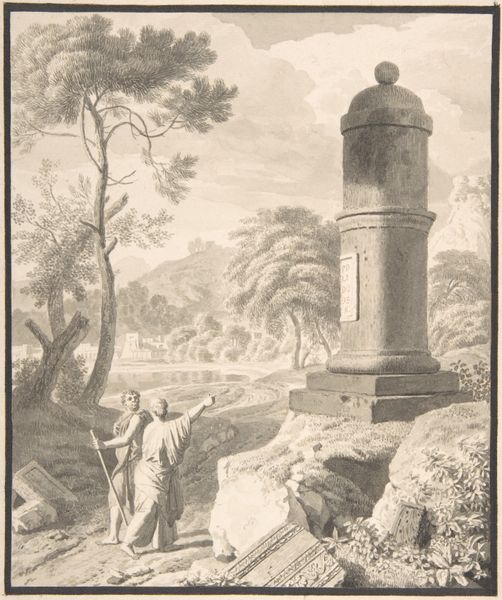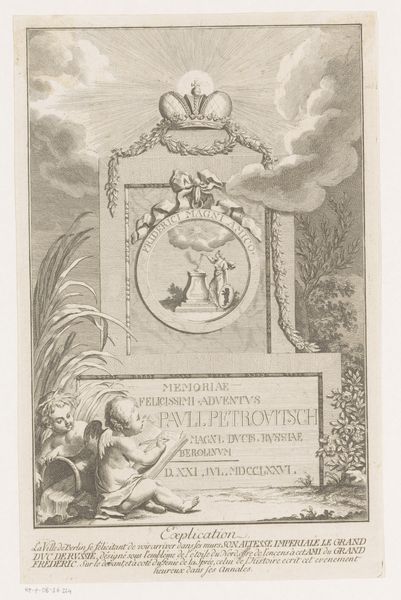
Dimensions: height 296 mm, width 207 mm
Copyright: Rijks Museum: Open Domain
Curator: At first glance, this piece feels like a stage set—all about contrasts of dark and light, figure and ground. Editor: Indeed. What strikes me immediately about this engraving from 1824-1826, is its melancholic air, steeped in 19th-century Romanticism. The allegorical elements speak of loss and remembrance. The artwork, entitled “Gedenkteken voor Petrus Haack,” seems to memorialize a Dutch professor of theology, Petrus Haack, designed by Jacobus Wijsman. Curator: I see your point about the romantic mood, but what specifically are the symbolic components beyond just simple mourning? Is there anything particularly relevant or indicative here? Editor: Certainly, we can find potent symbols scattered across this seemingly simple scene. Look at the weeping woman, probably representing grief, and the angel holding a portrait of Haack. Then, the child engrossed in study perhaps symbolizes the enduring legacy of knowledge, while the funerary monument displays details about Haack’s life and achievements, tying everything together. The large tree overhead could represent eternity. Curator: The placement of those figures creates interesting directional lines. See how our eyes move from the mourning figure up toward Haack’s portrait? It directs our emotional energy too. Even in monochrome, there’s great variation in the mark-making which lends the print visual complexity. Editor: That’s insightful. The artist clearly wants to guide us through this emotional narrative, highlighting key virtues associated with Haack: piety, scholarship, and remembrance, all communicated using potent visual metaphors. Even the choice of engraving, a medium often associated with documentation and permanence, enhances the memorial aspect. Curator: Thinking more deeply, these kinds of memorials reinforce social norms. Public mourning in art acts as a ritual, reassuring viewers of order even amidst the chaos of death, as society reflects on mortality while acknowledging the impact of those individuals whose lives have meaning and memory within our social structures. Editor: Absolutely. In viewing and contemplating these traditional symbols of loss and commemoration, we participate in a long cultural tradition of seeking meaning in the face of human finitude and also affirm cultural ideals about social order, grief and social norms surrounding bereavement. Curator: The piece asks us to remember not just Haack but also how we, as viewers, grapple with memory itself. A really thoughtful statement brought forth from such limited medium. Editor: Agreed. “Gedenkteken voor Petrus Haack” certainly opens our eyes to those many layers behind what seems, on first look, just a somber scene.
Comments
No comments
Be the first to comment and join the conversation on the ultimate creative platform.
